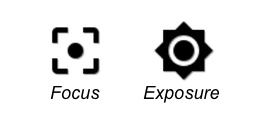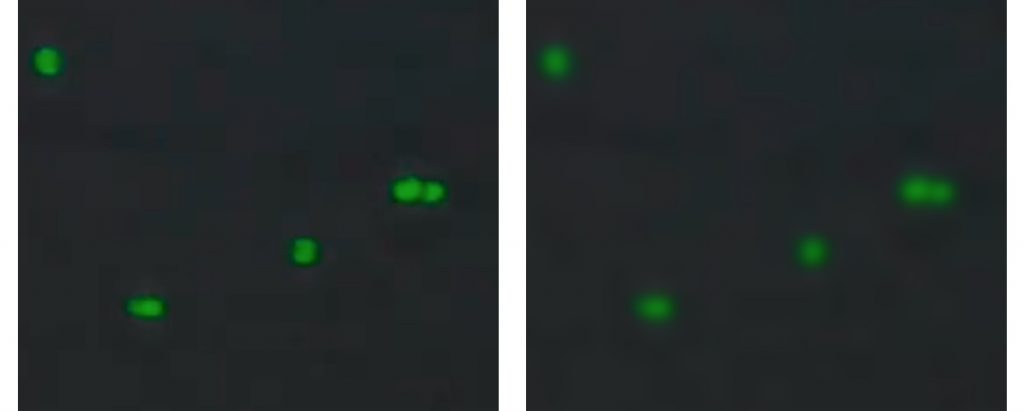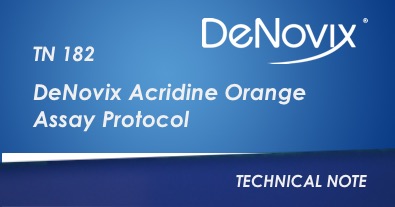Kit Contents
Kits include a solution of AO in PBS. The AO reagent may be stored protected from light at 2 – 8oC in an airtight container.
| Assay Size | Number of Tests |
|---|---|
| 0.25 mL | 50 |
| 1.5 mL | 300 |
Sample Prep
- Equilibrate all solutions to room temperature, and vortex before use.
- For each sample, mix AO and a cell suspension together in a 50% solution.
- Note: A 50% solution is made up of one part AO and one part cell suspension, resulting in a Dilution Factor of 2 for the cell suspension.
- Mix sample thoroughly prior to loading onto the CellDrop.
Sample Measurement
- Ensure that the arm is in the down position and launch the AO app.
- Clean the sample surfaces if there is visible debris in the preview image.
- Optional: Enter a sample name and additional sample information.
- Select or create a protocol, and enter the Dilution Factor of 2 for a 1-to-1 dye/cell suspension mix.
- With the arm down, dispense the sample aliquot into the measurement chamber using the groove on the lower sample surface as an alignment guide.
- Note: The volume of sample required depends on the protocol settings for the chamber height. The required volume is displayed on the Count button.
- Adjust the focus and exposure. Verify focus in green channel prior count.
- When the cells have settled and are no longer moving, tap the Count button.



Best Practices
Refer to Technical Note 186 – CellDrop Best Practices for additional guidance.
Refer to denovix.com/sds for safety data sheets for CellDrop Cell Counting Assays.
01-MAR-2023




